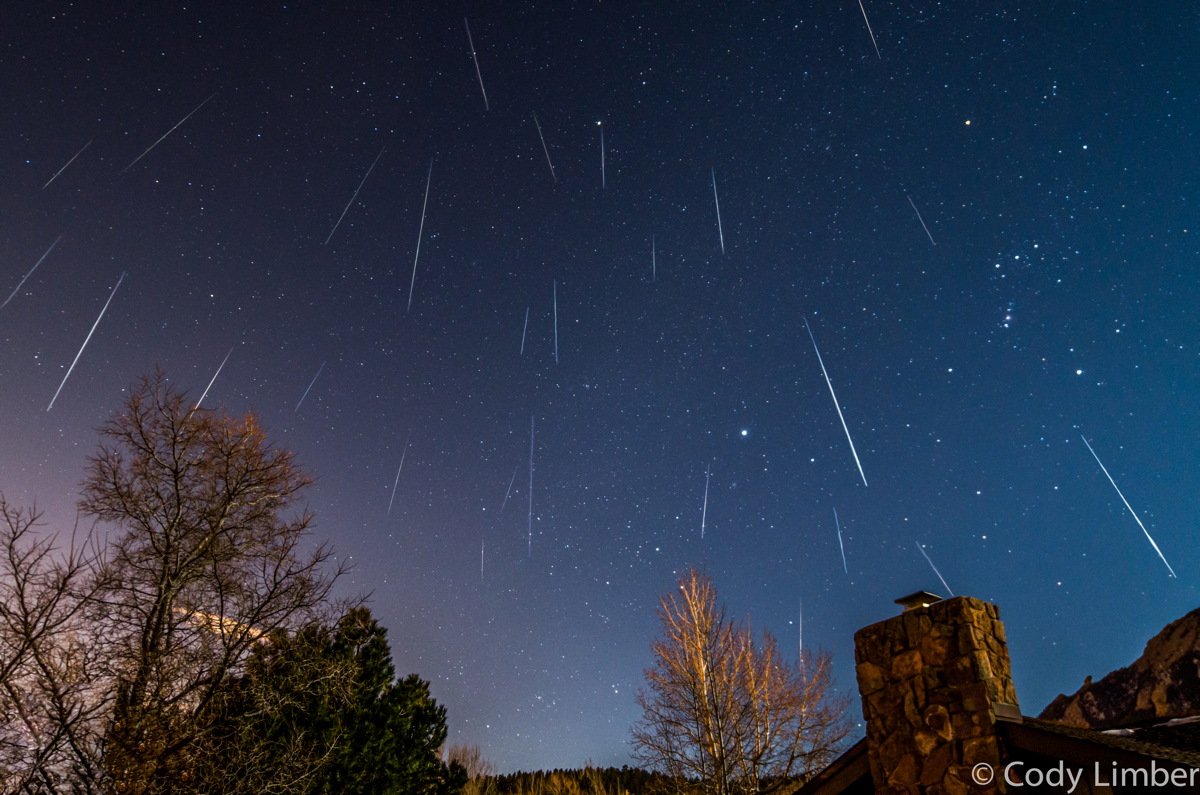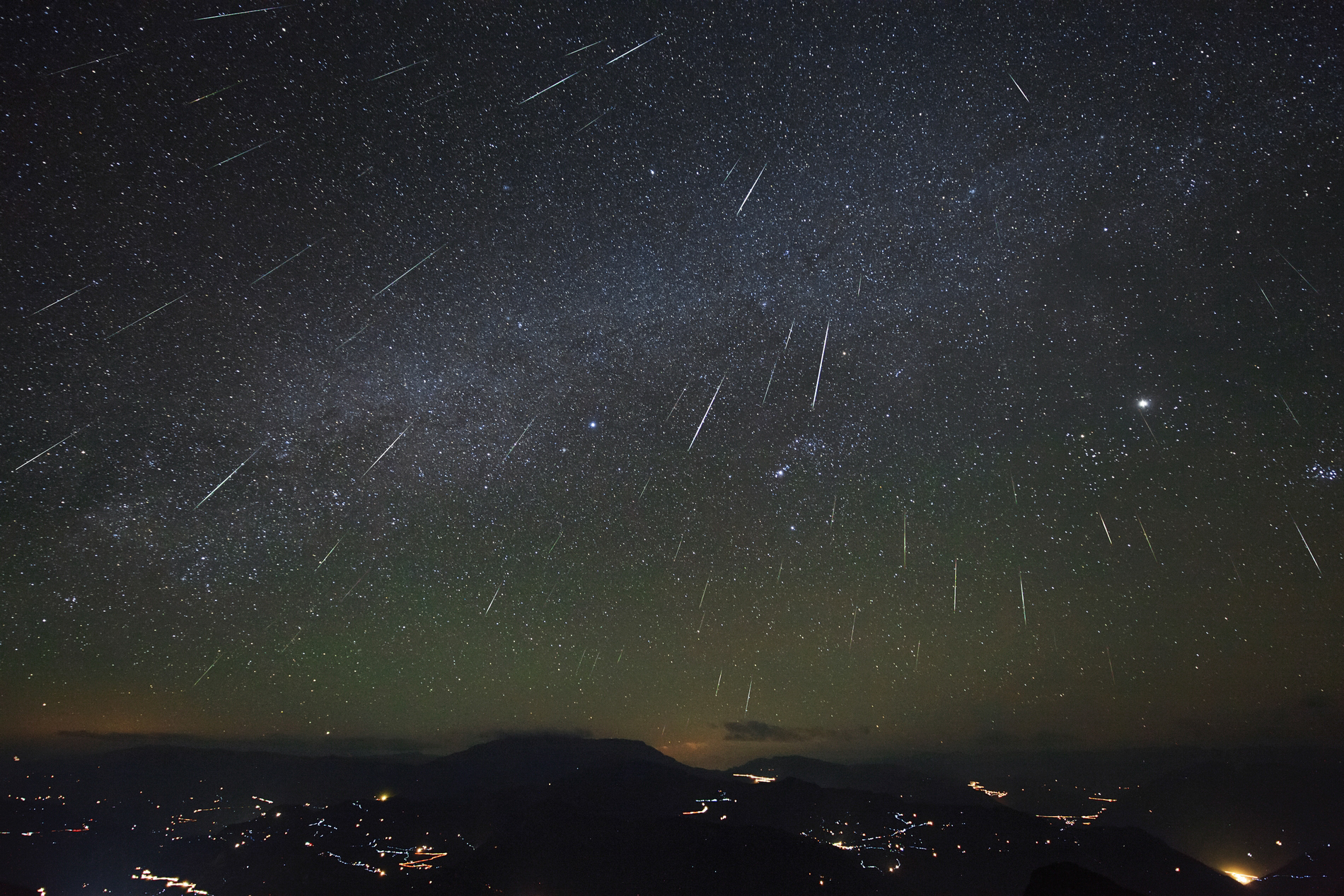Of the many meteor showers that occur throughout the year, the Geminid Meteor Shower in December may be the most reliably active. This meteor shower occurs when the Earth passes near 3200 Phaethon, a Palladian Asteroid. The Geminids were first observed in 1862. The shower gets its name because they appear to originate in the Gemini constellation.
Under ideal conditions, one may see as many as 50-100 meteors an hour. The meteors from this shower are also especially bright, and many astronomers believe that the shower is intensifying every year. The shower should peak around 9:00 p.m. on Saturday December 13th. That’s good news because most of the other significant showers, like the Perseids, peak after midnight. With no Moon until after midnight, we should be able to see a lot of meteors (weather permitting of course).
The George Observatory will be open Saturday, December 13th until midnight for viewing the shower. Tickets for viewing the shower are $5 and include access to our telescopes. That night, we’ll be able to view several star clusters and nebulae with our scopes. Jupiter should rise in time to be viewed as well. We’ll also have our Discovery Dome available for $3.
If you can’t make it out to the George, you can still view the shower anywhere with dark skies.









